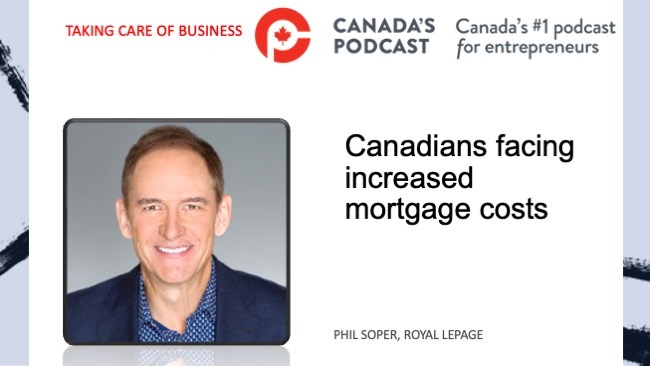The Bank of Canada announced Wednesday that it is holding its target for the overnight rate at 5%, with the Bank Rate at 5¼% and the deposit rate at 5%. The Bank is also continuing its policy of quantitative tightening.

RDNE Stock project
“Inflation in advanced economies has continued to come down, but with measures of core inflation still elevated, major central banks remain focused on restoring price stability. Global growth slowed in the second quarter of 2023, largely reflecting a significant deceleration in China. With ongoing weakness in the property sector undermining confidence, growth prospects in China have diminished. In the United States, growth was stronger than expected, led by robust consumer spending. In Europe, strength in the service sector supported growth, offsetting an ongoing contraction in manufacturing. Global bond yields have risen, reflecting higher real interest rates, and international oil prices are higher than was assumed in the July Monetary Policy Report (MPR),” said the Bank.
“The Canadian economy has entered a period of weaker growth, which is needed to relieve price pressures. Economic growth slowed sharply in the second quarter of 2023, with output contracting by 0.2% at an annualized rate. This reflected a marked weakening in consumption growth and a decline in housing activity, as well as the impact of wildfires in many regions of the country. Household credit growth slowed as the impact of higher rates restrained spending among a wider range of borrowers. Final domestic demand grew by 1% in the second quarter, supported by government spending and a boost to business investment. The tightness in the labour market has continued to ease gradually. However, wage growth has remained around 4% to 5%.
“Recent CPI data indicate that inflationary pressures remain broad-based. After easing to 2.8% in June, CPI inflation moved up to 3.3% in July, averaging close to 3% in line with the Bank’s projection. With the recent increase in gasoline prices, CPI inflation is expected to be higher in the near term before easing again. Year-over-year and three-month measures of core inflation are now both running at about 3.5%, indicating there has been little recent downward momentum in underlying inflation. The longer high inflation persists, the greater the risk that elevated inflation becomes entrenched, making it more difficult to restore price stability.
“With recent evidence that excess demand in the economy is easing, and given the lagged effects of monetary policy, Governing Council decided to hold the policy interest rate at 5% and continue to normalize the Bank’s balance sheet. However, Governing Council remains concerned about the persistence of underlying inflationary pressures, and is prepared to increase the policy interest rate further if needed. Governing Council will continue to assess the dynamics of core inflation and the outlook for CPI inflation. In particular, we will be evaluating whether the evolution of excess demand, inflation expectations, wage growth and corporate pricing behavior are consistent with achieving the 2% inflation target. The Bank remains resolute in its commitment to restoring price stability for Canadians.”
The next scheduled date for announcing the overnight rate target is October 25.
“No surprises today as the BoC held the policy rate at 5%. With last week’s GDP release showing a contraction in the second quarter, and growing signs of a cooling in the job market, there was little pressure for the BoC to keep raising rates. Our expectation is that this period of “weak economic growth” is set to continue over the rest of this year and into early 2024,” said James Orlando, Senior Economist with TD Economics.
“Although the BoC has moved back to the sidelines, it doesn’t mean it will let up on its hawkish rhetoric. It needs to make sure that financial conditions remain tight for the economy to continue to slow. Markets are still in the ‘will they, won’t they’ camp, with pricing for another hike around 50%. Given that the slowdown looks to continue, we think the bar for another hike has been raised.”
Douglas Porter, Chief Economist with BMO Economics, said the Bank has certainly left the door ajar to the possibility of more hikes, but unless growth rebounds in Q3—which we doubt—the BoC is likely done with rate hikes.
“The softer growth backdrop will bring inflation back to 2% over time in our view and in the BoC’s models, even if the short-term CPI outlook is much more problematic. Holding rates steady at the next meeting will require some nerve as the next two CPI reports could see headline inflation approach 4% (the next one is due Sep/19), and will likely require still-chilly growth and some calming in core inflation,” he said.
“With this pause on increasing interest rates, the Bank of Canada concludes that interest rates seem high enough to bring inflation back down. This means they recognize the early signs of weaknesses in the economy and labour market,” said David-Alexandre Brassard, Chief Economist, CPA Canada. “Interest rates will remain high for a few more months and as they make their way through the economy, more consumers will be faced with higher debt payments.”
CPA Canada’s consumer debt survey shows that as many as one-third (33 per cent) of indebted Canadians admit they don’t understand the impact of rising or falling interest rates on their debt.
“This is particularly concerning as families struggle with payments on both mortgage and consumer debt,” said Carolyn Goodwin, CPA, Senior Manager, Social Impact at CPA Canada. “With 46 per cent of Canadians carrying non-mortgage debt, it’s important to tweak your budget to reduce your cost of borrowing and save money in the long run.”

Mario Toneguzzi
Mario Toneguzzi is Managing Editor of Canada’s Podcast. He has more than 40 years of experience as a daily newspaper writer, columnist, and editor. He was named in 2021 as one of the Top 10 Business Journalists in the World by PR News – the only Canadian to make the list)
About Us
Canada’s Podcast is the number one podcast in Canada for entrepreneurs and business owners. Established in 2016, the podcast network has interviewed over 600 Canadian entrepreneurs from coast-to-coast.
With hosts in each province, entrepreneurs have a local and national format to tell their stories, talk about their journey and provide inspiration for anyone starting their entrepreneurial journey and well- established founders.
The commitment to a grass roots approach has built a loyal audience on all our social channels and YouTube – 500,000+ lifetime YouTube views, 200,000 + audio downloads, 35,000 + average monthly social impressions, 10,000 + engaged social followers and 35,000 newsletter subscribers. Canada’s Podcast is proud to provide a local, national and international presence for Canadian entrepreneurs to build their brand and tell their story.





